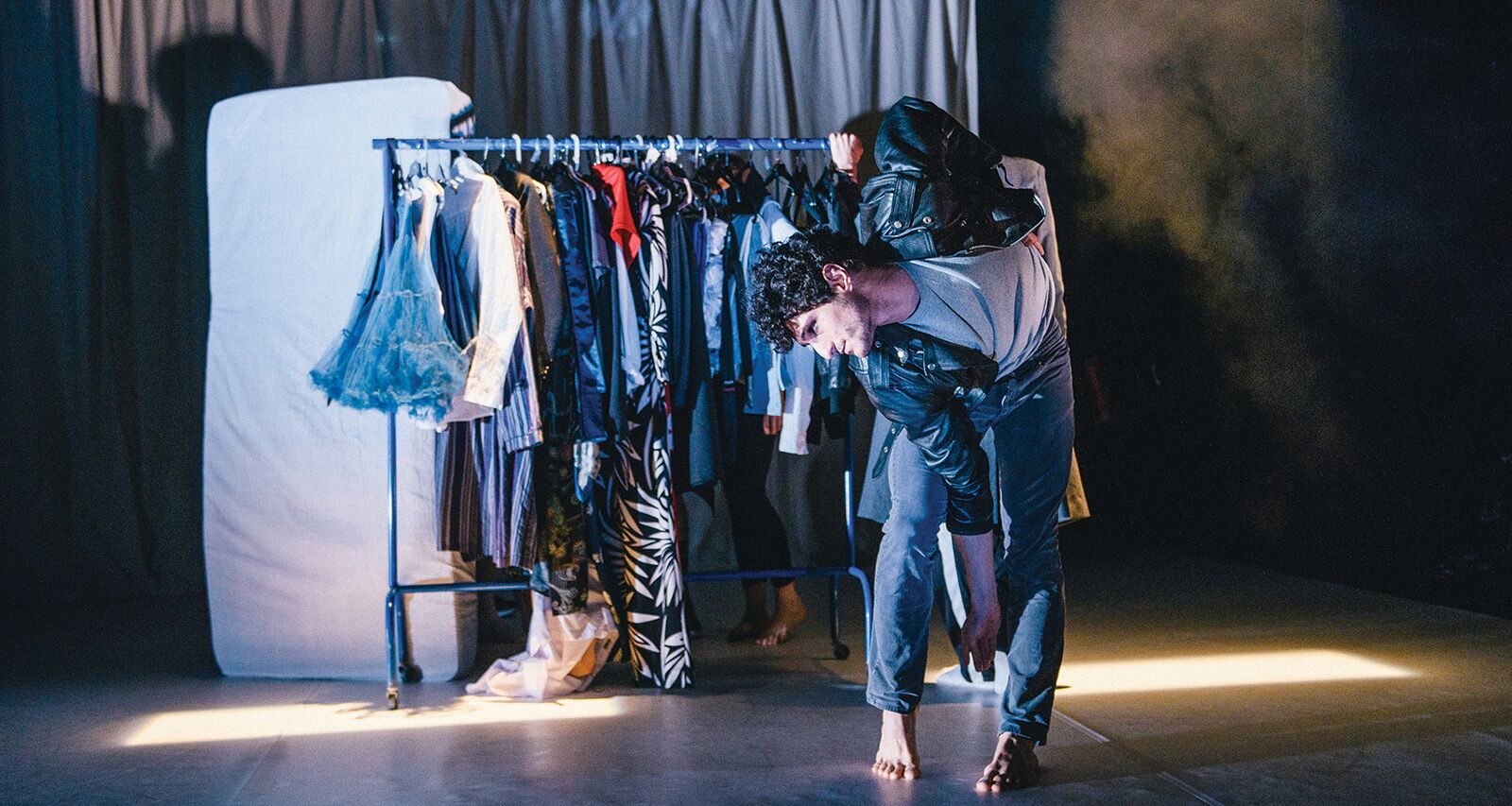We like to think that we’d be remembered somehow when we are gone, to be immortalised within history one way or another in a defining moment. But how does someone make their mark? In Scottish Dance Theatre’s performance, Velvet Petal, we witness a group of talented individuals try and vie for the audience’s attention, changing themselves in the process – with varying degrees of success.
With a 12-person strong ensemble, the dance company explores the ways in which people attempt to make their presence known. Two clothes racks feature prominently on stage, often moving around the space and allowing the dancers to assume a new identity. Although this can be seen to represent fashion’s importance in helping people make a statement – as well as challenging preconceptions concerning how men and women should dress – the constant undressing and changing clothes becomes tedious. The same can be said for the repetitive use of a bare mattress on the stage, which many dancers writhe on – sometimes alone, other times with a partner or two. While there is surely some sense or meaning behind the mattress’s presence onstage, it again adds little to the performance.
In the programme, choreographer Fleur Darkin speaks of Patti Smith’s memoir as heavily influencing Velvet Petal – hence the headshot of her former boyfriend, Robert Mapplethorpe, which is featured during the performance. However, the conceptual ideas behind Darkin’s choreography do not translate onstage on their own; what is more, the short monologues voiced by Adrienne O’Leary do not help us comprehend the meaning behind the performance. O’Leary’s smiles to the audience as she talks, which borderline on an arrogant smirk, suggest that we are being let in on a secret that few others know about our existence. With the audience left unenlightened by the show’s end, Velvet Petal verges on being self-indulgent, for if you need to explain the piece in order for spectators to have some grasp of what you’re trying to achieve, the mark has been missed.
While unsure what to make of Velvet Petal, what can be recognised in this performance is how cool contemporary dance can be – particularly when you have a soundtrack like this one. Torben Lars Sylvest’s arrangement of tracks is an absolute winner, having the audience tap their feet and/or nod their heads to the beat throughout.
Paired with the pulsating rhythm, the sharp, quick jutting of the dancers’ bodies as they perform in unison is hypnotising. The group pieces are undoubtedly the strongest moments of the performance, which are energetic and rebellious against the norm. So, it’s a shame that there are so few moments like this; what is more, some members of the ensemble are left on the side-lines for the majority of the performance. Still, one particular standout performance is Pauline Torzuoli, who is captivating to watch and successfully wins the spotlight from her peers.
In spite of the confusion surrounding the production’s motives, Velvet Petal is still a performance that arouses curiosity and intrigue. Given the success of the original run, however, you cannot help but wonder whether we missed out on something golden.
